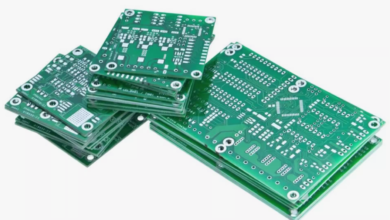The Evolution of Traditional Telephony: Understanding POTS Transformation

Unpacking POTS: What Is It and Why Is It Changing?
Plain Old Telephone Service (POTS) has been synonymous with reliability and universal connectivity. Home to the iconic dial tone and underpinning much of the world’s communication infrastructure for decades, POTS is characterized by its analog signal transmission over copper wires. However, as the digital revolution sweeps across industries, POTS landline systems face an impending obsolescence. Drastic shifts in consumer behavior, an insatiable demand for high-speed data, and the lucrative prospects of integrating telephony with internet-based services necessitate an evolution of network systems. Businesses and individuals are now seeking more from their communication solutions—scalability, multimedia support, and mobile integration—which the aging POTS infrastructure is ill-equipped to deliver.
Technological Advances Driving POTS Modernization
The cornerstone of POTS landline modernization is Voice over Internet Protocol (VoIP), a mature technology that enables voice communication. VoIP has revolutionized telephony by allowing users to call from various devices, including computers, smartphones, and VoIP-enabled traditional phones. Adopting cloud computing has expanded these capabilities, offering flexible, on-demand network services that can be accessed anywhere. Businesses have been particularly keen to adopt VoIP and cloud services to reduce costs associated with long-distance calls and the maintenance of physical infrastructure.
Amplifying these advances is the growth of 5G and the Internet of Things (IoT), which promise unparalleled connectivity, speed, and bandwidth. With 5G’s rapid data transmission and IoT’s network of smart devices, modern telephony is increasingly becoming integrated with other digital services, heralding a new era in which POTS transformation is not just an option but a necessity for future-oriented communication.
Assessing the Impact of POTS Transformation on Businesses
The transition from traditional POTS to more agile, digital communication systems offers several tangible benefits to businesses. The economic advantages include significant cost reductions, eliminating the need for physical line maintenance, and implementing advanced telecommunications features that don’t require hefty investments. Furthermore, these modern systems foster an environment that supports telecommuting, enhances customer interaction, and enables a more responsive approach to market demands. Against this backdrop of benefits, businesses contend with the challenges inherent in migrating from well-established POTS infrastructure to novel technologies. Workforce retraining, initial setup complexity, and ensuring seamless integration with legacy systems often present initial hurdles that can be surmounted through comprehensive planning and phased rollouts.
The Global Landscape of POTS Transformation
While the benefits of moving away from POTS are evident, the pace and manner of this transformation vary widely across the globe. In some regions, aggressive policies and investments reflect a concerted strategy to transition networks, spurred by the recognition of long-term cost savings and performance enhancements. In others, the POTS architecture persists due to regulatory hurdles, economic constraints, or a need for compelling incentives to overhaul existing communication systems. However, examples of successful POTS transformation worldwide provide valuable templates for countries and companies looking to modernize. International regulatory entities and standards committees are critical in facilitating a harmonized approach to this global transition, ensuring they remain compatible and secure as networks evolve.
User Experience: How Customers Are Adapting to New Telephony Solutions
End-user experience lies at the heart of any discussion on telecommunication innovation. In transitioning from POTS, consumers frequently encounter a significant upgrade in service quality. Enhanced features such as video calling, messaging integration, and internet connectivity accompany the move to VoIP and digital communications, enriching the user experience. However, the onus falls on service providers to ensure this transition is smooth and well-supported. Customers need assistance navigating new devices and interfaces, and an inclusive approach to tech adoption is essential to prevent disenfranchisement among less tech-savvy users.
The Environmental and Social Implications of Digital Telecommunication Systems
The environmental benefits of retiring legacy POTS equipment are notable. Reduced energy consumption, facilitated by more efficient digital systems, and reduced waste generated from outdated equipment highlight the sustainability advantages of POTS transformation. In terms of society, contemporary communication technology is essential in closing the digital gap and giving previously marginalized populations greater access to resources. Digital literacy initiatives are instrumental in ensuring that all individuals can engage with and benefit from the new telephony landscape.
Future-Proofing: Preparing for the Next Wave of Telecommunication Innovations
Anticipating future developments in telecommunication assures businesses and consumers that their investments today will stand the test of time. This future-proofing involves adopting flexible system architectures that readily accommodate updates and integrating next-generation technologies. The role of predictive analytics cannot be understated; it provides insights that drive innovation and responsiveness to emerging market trends. Ensuring that telecommunication assets are adaptable to upcoming advancements secures a competitive edge for businesses and a reliable, cutting-edge experience for users. As we traverse the complicated yet exciting path of POTS transformation, authoritative and up-to-date resources prove invaluable. The Federal Communications Commission (FCC) underscores the progress in IP-based networks and sets forth a compelling case for expediting this transition.




